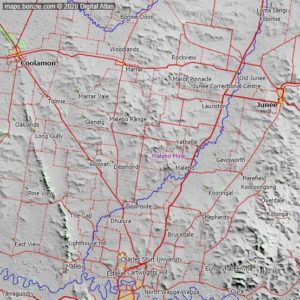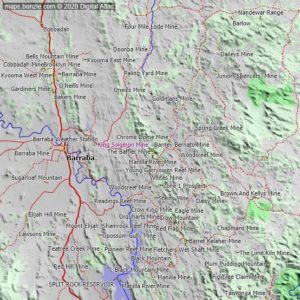


Malebo, the first of two properties acquired by JNC can be found in the central-south region of Australia in the Lachlan Orogenic belt, which covers roughly 159 square kilometers and contains a series of prolifically mineralized accretionary terranes which host several economically important mineralized deposits. Much of the mineralization is structurally controlled low sulphide in nature and manifesting as auriferous short, lenticular, blocky quartz veins hosted within oada sandstone units. A potential controlling factor of this mineralization may be the regional NNE/SSW striking Narriah Fault, which spans a 35 km strike across the application area. Mineralizing fluids are potentially related to regional metamorphism and/or granitic intrusive during the middle-late Silurian. The relationship between a regional structure juxtaposing moderate grade metamorphic rocks, gold-bearing quartz veins, and gold-arsenic-silver-minor lead geochemistry, is consistent with an orogenic gold target type.
These systems show the potential to have significant depth extension and considering Malebo has been largely under-explored due to a thin cover of recent sediments, historical reports show samples of high-grade deposits and reveals the potential for significant gold resources throughout several past mines and prospects, with compelling results that demand the need for further exploration.

Solomons, the second property acquired by JNC can be found in the north-east portion of the New England Orogenic Terrane region and covers roughly 139 square kilometers. This region contains island-arc and continental-arc gold-mineralized belts, occupied by broad alluvial gold fields and several economically important gold deposits. Mineralisation is of an orogenic quartz vein type. Such systems typically comprise high grade lodes with significant depth extension. The license includes 12 historic gold mines and prospects which follow a large linear NE/SE trend, yet the license is largely under-explored. Historical records from small-scale production indicate grades of up to 132 g/t Au and 1648 g/t Ag. The region continues to remain underexplored since the gold-rushes of the early 1900’s.
Read more about Malebo & Solomons here